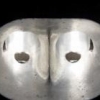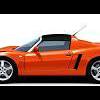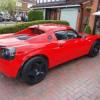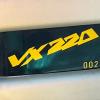For the new head I decided to use port moulds to help me get a better look inside - all the angles and LED torches in the world cannot see right around the SSR I find.
This is how you get a mould of your ports.
CLICK PICTURES FOR BIGGER
This is a good, tough, resilient RTV that i've used for years. It really holds together (as you'll see later).
You'll need the valves to hold the RTV in, so coat them with a release agent so the RTV dosn't stick. Here I used a PTFE based bike chain lubricant, as I was in a bind once and tried it and it worked really well, so i've kept doing it.
Coat the port walls as well:
Here I taped the valves up, although normally i just refit the springs and locks:
Get some wire and bend some 3D shapes into it. We'll embed it in the rubber while it cures so that it helps us pull the rubber out. The green Lego trees are great for this job if, like me, you don't mind upsetting children:
Mix your base and catalyst. Air will escape well enough in the port.
Pour:
Half fill and leave for a few minutes, agitating with a stick/screwdriver to get air to rise out.
Same again - pause for air:
After 45 minutes pop in the wires:
Hook them so they dont fall right in:
I give it 24hrs. It probably takes 12.
Now pop the valves.
The valve stem holes in the rubber are important - this gives it a bit of 'give' when you are compressing the rubber to get it out. Some people mould a filled port, but I always leave the valves in to get that space. It makes a difference.
For these z22se ports you'll have to rip out the injector 'plug'.
Using blunt screwdrivers start to wiggle the rubber out:
Lever it side to side, but also go in to the combustion chamber side and and puch from the valve side, making sure to ease the rubber over the valve guide's protrusion.
Keep working it
And there is a port mould (with most of the injector spray area)
Edited by blackoctagon, 18 May 2021 - 02:35 PM.




















